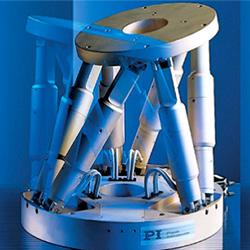Electrical engineers often work with motor cables and servo cables, which both supply motors with electrical energy and have a nominal voltage of 600/1,000V. But what exactly are the differences between the two cables?
What's the Difference Between a Servo Cable and Motor Cable?
Nils Jager | igus
What are the differences?
Cable colors and DESINA

The different colors of the two cable types is the first thing you'll notice. While servo cables are often orange, motor cables usually have a black outer jacket. That's because of DESINA, a standard intended to bring about uniformity in mechanical engineering. If a cable is manufactured according to the DESINA standard, outer jacket color must be chosen according to cable function.
According to DESINA, motor cables have a black outer jacket and servo cables have a pastel orange one (RAL 2003).
 Cable design
Cable design
Servo cables almost always have an overall shield that is intended to prevent the propagation of electronic magnetic interference. Motor cables are used with or without a shield.
An examination of the two cables’ conductors reveals their primary differences.
A typical motor cable consists of the four main conductors for connecting the three phases and and a ground (or PE). Nothing more is needed to operate a three-phase motor.
Some three-phase motors have an additional connection for a temperature sensor or a built-in brake. These are normally connected to the motor terminal board via a separate cable.

Servo motors are generally connected via a round connector (like the Intercontec connector, Series C, M40, pictured right). This connector has all the contacts necessary for supplying energy to the motor and for connecting temperature sensors and brakes as needed.
Multiple cables cannot be fed into one of the round connectors used here due to IP ratings. That is why servo cables have, in addition to the main conductors, shielded control pairs that are provided for temperature controllers or brakes. There are servo cables without these additional pairs, but they tend to be the exception. This means that most servo cables have one or two control pairs in addition to the 4 conductors for the motor.

Can I use a motor cable to connect servo motors?
The answer is yes. To do this, either the servo motor must have no connection for temperature sensors or brakes, or these connections must be designed separately. Then, they can be connected via a control cable.
A normal three-phase motor can be connected via a servo cable and with the unneeded conductors cut off.
Conclusion
The primary differences between servo and motor cables are their color and design. And yes, you can connect each of them to servo motors.
The content & opinions in this article are the author’s and do not necessarily represent the views of ManufacturingTomorrow
Comments (0)
This post does not have any comments. Be the first to leave a comment below.
Featured Product

